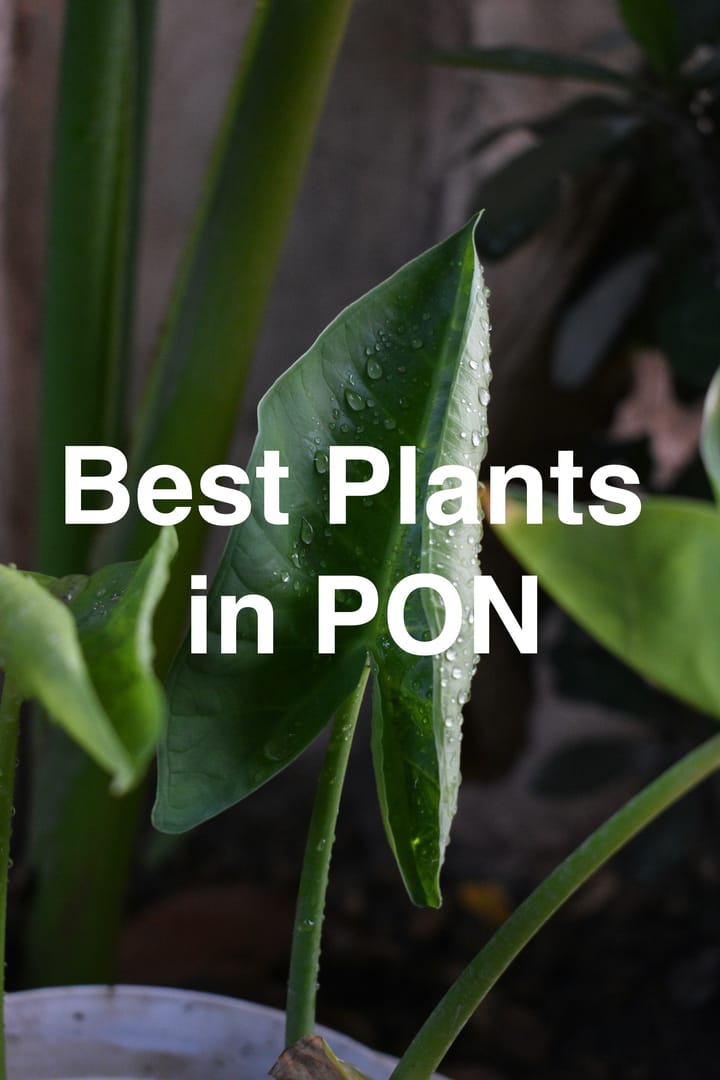Plant Propagation
Propagation is a fascinating aspect of gardening that allows you to create new plants from existing ones.
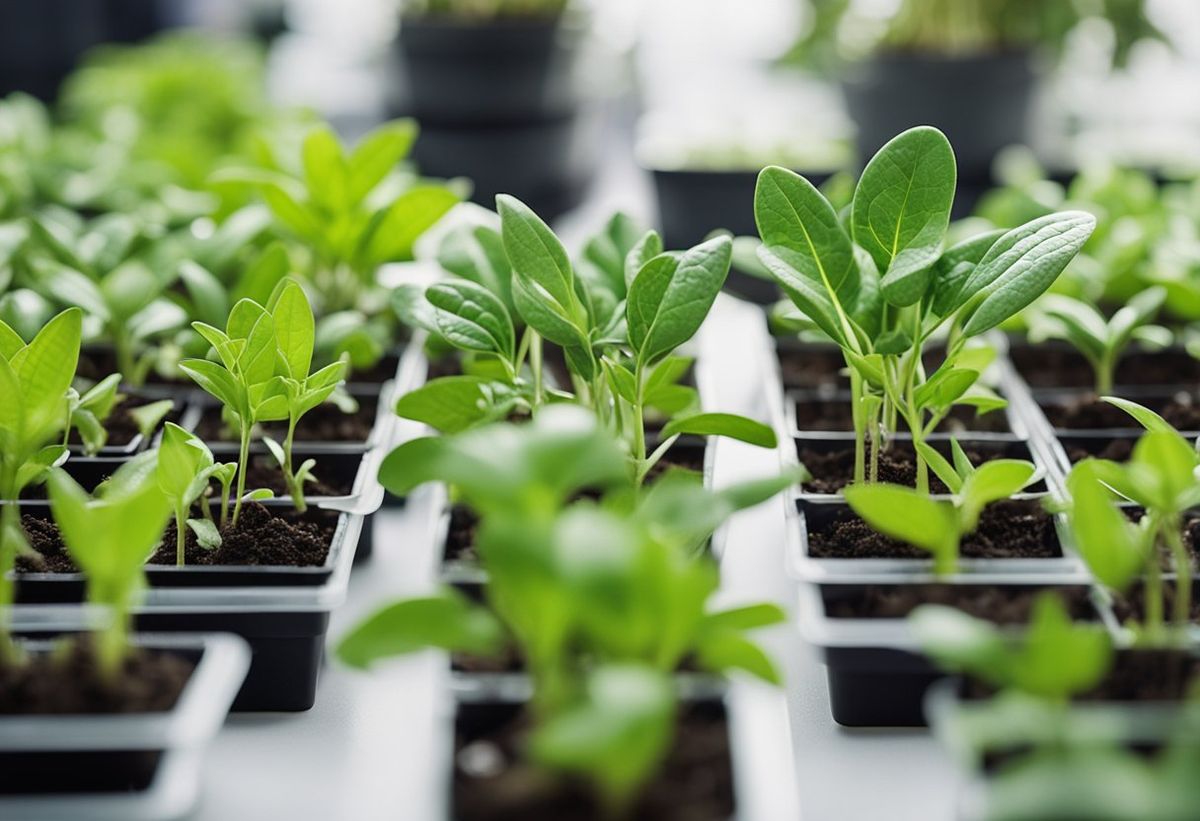
Table of Contents
It can be both an art and a science, requiring knowledge, skill, and experience for success.
With various methods available, understanding the different types of propagation and how to carry out each can significantly improve the success rate and expand your plant collection.
There are two primary types of propagation: sexual and asexual.
Sexual propagation involves the union of pollen and egg, often through seeds, giving rise to a new plant with genetic variation.
Asexual propagation, on the other hand, involves techniques such as cuttings, layering, or division, which typically produce plants genetically identical to the parent.
Getting familiar with these methods and the necessary tools and conditions can benefit novice and seasoned gardeners alike.
Key Takeaways
- Explore various propagation methods for creating new plants from existing ones.
- Become familiar with sexual and asexual propagation techniques and their differences.
- Knowledge of the essential tools, conditions, and care required for successful propagation.

Understanding Propagation
Propagation, the process of creating new plants, falls into two main categories: sexual and asexual.
Sexual propagation relies on combining pollen and egg, utilizing the genetic material of two parent plants to create a distinct third plant.
On the other hand, asexual propagation involves using vegetative parts of a single-parent plant to generate genetically identical offspring.
Among asexual propagation methods, vegetative propagation and micropropagation are two common techniques.
Vegetative propagation includes methods such as stem cuttings, leaf cuttings, and various types of layering.
In contrast, micropropagation is a more controlled process that uses plant tissue cultures in a laboratory setting, allowing for the rapid production of numerous identical plants.
As you explore plant propagation, consider which method suits your gardening needs and plant types for successful reproduction.
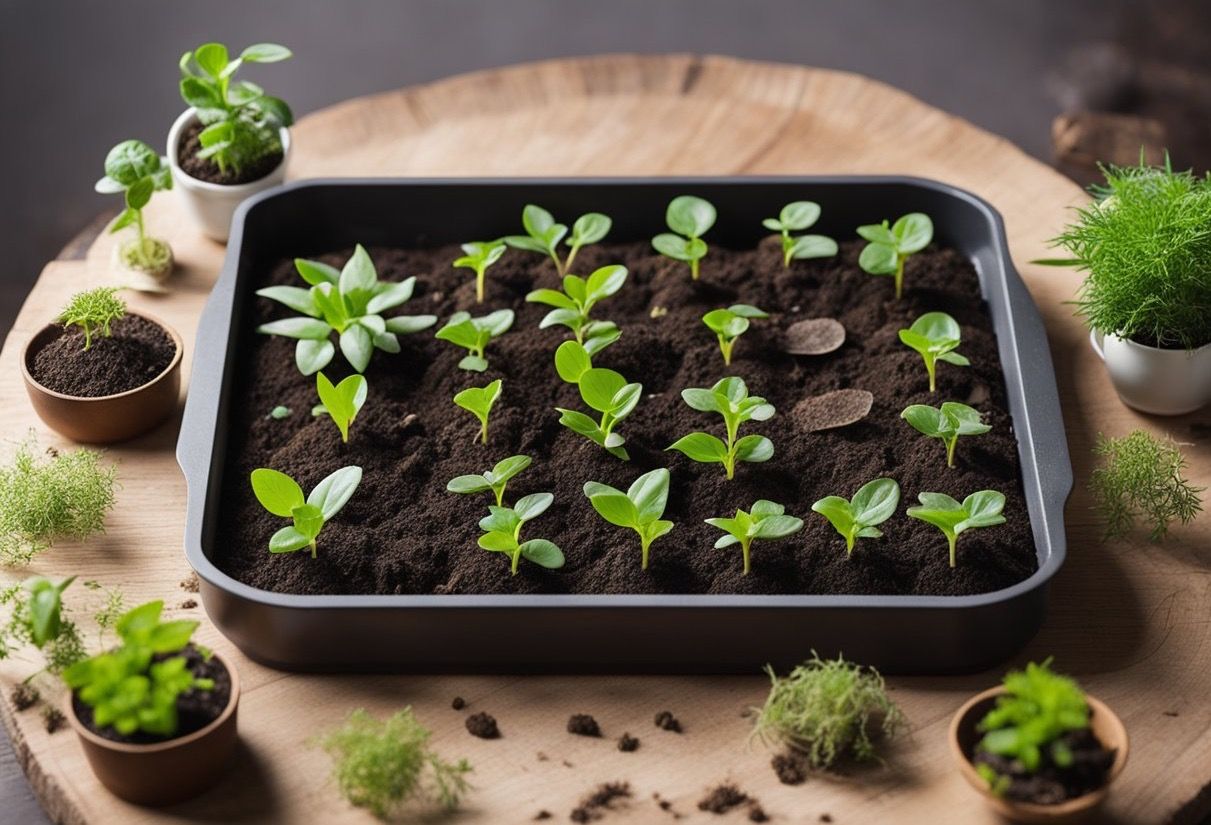
Types of Propagation
Cuttings
There are various types of cuttings you can use to propagate plants: stem, root, leaf, heel, and cane cuttings.
To propagate using stem cuttings, take a portion of a healthy stem, remove the lower leaves, and insert it into a well-draining growing medium.
Layering
Layering involves the parent plant's stem forming roots while still attached and can be done using simple or air layering.
For simple layering, bend a flexible stem to the ground, make a shallow cut to expose the inner layers, and cover it with soil, keeping the tip above ground.
In air layering, remove a bark ring from the stem, wrap it in moss, and protect it with plastic until roots form.
Air Layering
Air layering is a form of layering where the stem is not in direct contact with soil.
To air layer, choose a healthy stem, remove a ring of bark, and apply rooting hormone to the exposed area.
Wrap it in moist sphagnum moss and secure it with plastic, allowing roots to form before cutting the new plant from the parent and potting it up.

Water Propagation
Water propagation allows you to root cuttings in water before transferring them to soil.
Take a healthy cutting, remove the lower leaves, and place it in a container with water, ensuring the cut end is submerged.
Change the water regularly to prevent bacterial growth and monitor for root development.
Division
The division process separates a parent plant into sections containing some roots to create new plants.
Dig up the plant, maintain its root system, and divide it into sections using clean pruning shears or a spade, then replant each section immediately.
Grafting
Grafting involves joining two plants by attaching a shoot or bud (scion) from one plant to another's rootstock.
Budding and grafting are common techniques, with budding done in late summer when the bark easily separates from the tree and grafting done in winter when both scion and rootstock are dormant.
Seeds
Growing plants from seeds involves sowing, germination, seed dormancy, seed scarification, and seed stratification.

Sow seeds according to their specific needs and ensure proper moisture, temperature, and light conditions.
To break seed dormancy, use scarification (scratching the seed coat) or stratification (exposing the seed to a cold, moist environment) to stimulate germination.
Propagation Tools and Conditions

Tools
To propagate plants successfully, you'll need some essential tools.
A sharp knife or pruning shears are necessary for taking cuttings and dividing plants.
You should also invest in containers with good drainage to encourage healthy root development.
Additionally, consider using rooting hormone to speed up the process and increase the chances of success.
Conditions
The correct set of conditions is crucial for successful propagation.
Light and water levels should be balanced so the plant receives enough energy while preventing overwatering.
Keep an eye on the temperature as well; most plants require warmer conditions for optimal growth.
Ensure adequate oxygen levels by providing proper aeration in your growing media.
Finally, a greenhouse or humidity control system can maintain ideal humidity levels, vital for many propagation methods.
Propagation by Plant Types
Succulents
You can remove a healthy leaf from the parent plant and lay it on well-draining soil to propagate succulents. Keep the soil slightly moist, and within a few weeks, new roots will develop.
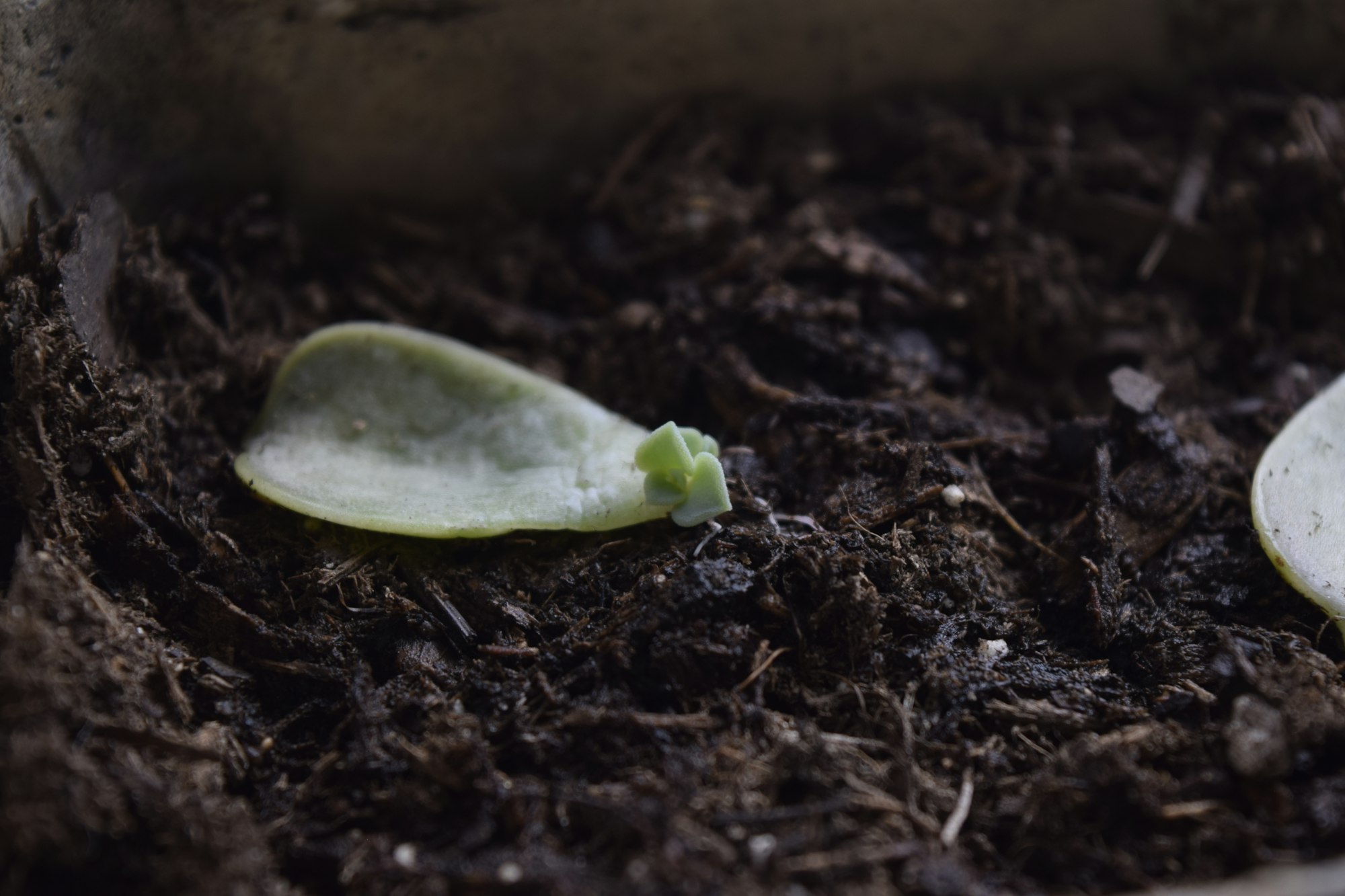
Trees and Shrubs
Hardwood cuttings taken from deciduous shrubs like Forsythia, Philadelphus, or Ceanothus, or evergreens such as conifers thrive well during winter months.
Just make a straight cutting from a section of healthy branches, then insert the cut end into a well-drained potting medium.
Herbaceous Plants
You'll want to divide their roots or rhizomes carefully for herbaceous plants such as Dahlias or Begonias.
Replant the divisions in fresh soil, giving them adequate water and sunlight.

Indoor and Outdoor Plants
Pothos, Philodendron, and Monstera are easy-to-propagate indoor plants using water propagation.
Snip a cutting with a node and place it in a water container.
For outdoor plants like Snake Plant or Peperomia, leaf cuttings or division methods work well in producing new plants.
Vegetable Seeds
Starting vegetable seeds indoors can give you a head start on the growing season.
Sow seeds according to package instructions regarding depth and spacing, and transplant them outdoors once they're strong enough and conditions are appropriate.

Propagation Stages and Care
Stages of Growth
During the initial stages of propagation, tender seedlings emerge in spring and begin their growth.
As time progresses, they mature and eventually enter a dormant season.
In the dormant phase, plants recuperate and prepare for new growth, typically resuming in spring or early summer.
Following this growth, plants may require transplanting or division to maintain their health and vigor.
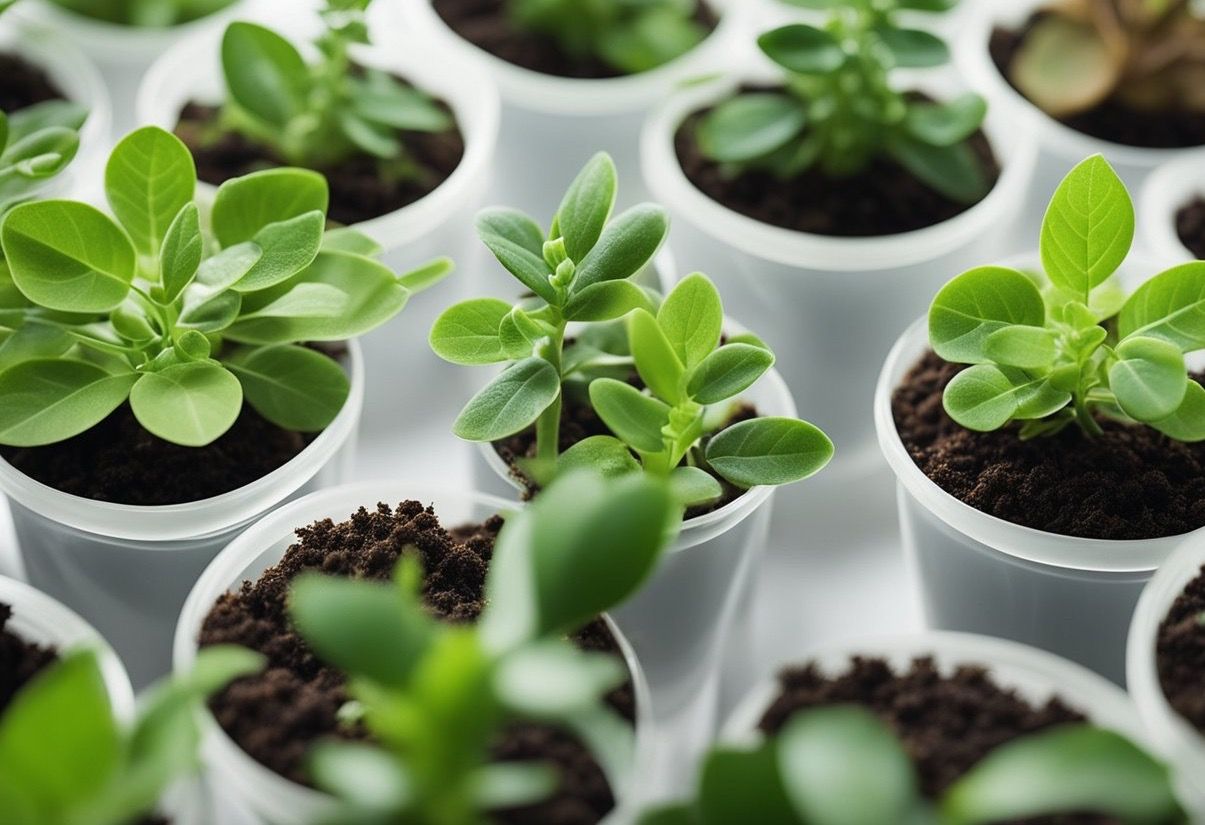
Post Propagation Care
Once your plants have successfully propagated, properly caring for them is essential.
Transplanting seedlings is crucial in ensuring they have the space and resources necessary for healthy growth.
A crucial part of post-propagation care is hardening plants and gradually adapting them to outdoor conditions.
By exposing your plants to the elements incrementally, you'll help them establish strong and resilient new growth, ensuring their long-term success.
Frequently Asked Questions
What are the main methods of plant propagation?
There are two main categories of plant propagation: sexual and asexual. Sexual propagation involves seeds, while asexual propagation includes methods such as cuttings, layering, and division.
How does asexual propagation differ from sexual propagation?
Asexual propagation creates genetically identical plants using plant parts such as stems, roots, or leaves.
In contrast, sexual propagation involves the union of male and female reproductive cells, producing genetically diverse offspring through seeds.
What tools are commonly used in plant propagation?
Hand pruners or sharp knives make cuttings, whereas trowels or spades are used for digging and dividing plants.
Additionally, rooting hormones, containers, and sterile potting mix are necessary for successful propagation.
How is cutting propagation performed?
To propagate plants by cutting, select a healthy section of the plant, then make a clean cut using a sharp tool.
Dip the cut end into rooting hormone and insert it into a moistened potting mix, ensuring proper watering and minimal disturbance until roots are established.
What are the advantages of asexual propagation?
Asexual propagation offers several benefits, such as producing plants with identical traits to the parent plant, allowing for faster growth or flowering than seed-grown plants, and enabling propagation of sterile or seedless plants that cannot reproduce sexually.
Why is propagation important in agriculture?
Propagation plays a vital role in agriculture, as it allows farmers to maintain desirable plant traits, produce large numbers of plants quickly and cost-effectively, and propagate plants specifically adapted to local environmental conditions, ultimately improving crop yields and quality.

